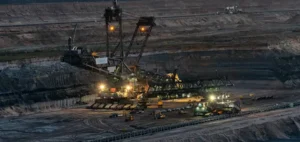India is experiencing a significant decline in hydroelectric generation, with a 17% drop in FY2024. This situation is exacerbated by lower water levels in the country’s main reservoirs, currently at 22% of their total capacity. These unfavorable climatic conditions, particularly the impact of El Niño, continue to weigh on hydroelectric power generation, reducing this source’s contribution to the national energy mix. As a result, the use of coal for power generation is on the increase. The share ofhydropower in India’s total energy production fell to 5.95% in April 2024, from 7.05% the previous year, while that of coal reached 90.78%, according to the Central Electricity Authority.
Increase in coal imports
At the same time, India imported around 85 million tonnes of thermal coal in 2024, underlining a growing dependence on imports to compensate for declining hydroelectric production. Experts predict that this trend will continue, particularly during the summer months, to meet increased energy demand. Despite efforts to increase domestic production, demand still outstrips supply. Government measures include directives for coastal power stations running on imported coal to operate at full capacity until mid-October, and for domestic coal-fired power stations to continue blending 6% imported coal until the end of June.
Coal dominates the energy mix
Despite the Indian government’s commitments to achieving carbon neutrality by 2070 and increasing renewable energy infrastructure, the share of renewables in total electricity generation remains marginal. Currently, only 8.5% of electricity comes from renewable sources, compared with 80.63% from coal. In response to growing energy demand, the Federal Coal Department forecasts that coal demand for power generation will reach 1.16 billion tonnes per year by fiscal year 2030. In addition, India is adding 27 GW of coal-fired power generation capacity and plans to reach 80 GW of thermal capacity by 2032.
Economic and industrial impact
According to the International Energy Agency, India is one of the main countries where industrial energy demand exceeds that of its peers. This increase is fuelled by GDP growth, urbanization and growing demand for materials such as cement and steel. As a result, India’s energy demand is set to surpass that of any other region in the world by 2050. The focus on increasing coal-fired generation capacity underlines the crucial importance of this fuel in India’s energy landscape. This strategy, while necessary in the short term to meet growing demand, raises questions about India’s long-term sustainability goals. In short, India has to balance meeting its immediate energy needs with its long-term commitments to environmental sustainability. This duality reflects the challenges the country faces in managing its energy transition.






















